Disclaimer: This blog post contains affiliate links. If you make a purchase through these links, I may earn a small commission at no additional cost to you. Learn More. Thank you for supporting our garden community.
How to Make Fine Leaf Mold Compost for Your Vegetable Garden
Many gardeners have made or attempted to make compost in their home vegetable garden. However, few beginner gardeners have even heard of leaf mold compost, let alone the simple process and numerous benefits it offers. In this post, we will discuss how to make fine leaf mold compost, and how you can use it to supercharge your garden.
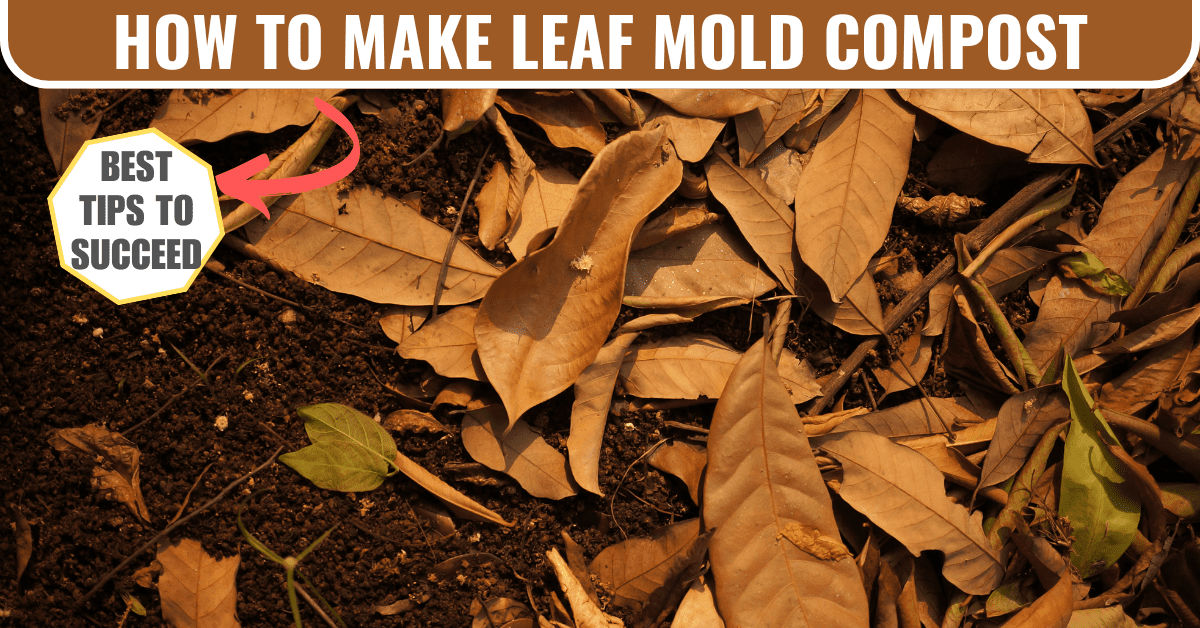
How to Make Fine Leaf Mold Compost
Imagine a type of compost that has absolutely no smell, requires no effort, and is actually better than other types of compost.
That is exactly leaf mold.
In this guide, I will walk you through how to make fine leaf mold and explain how it will naturally benefit your vegetable garden. You will discover new methods that make this fine leaf mold compost.
Say goodbye to synthetic fertilizers from the nursery. Leaf mold is your go-to sustainable organic matter solution to compost.
So let’s get right into how to make homemade leaf mold for your vegetable garden!
Products
To buy high-quality garden seeds, check out Burpee.
For a wide selection of perennial garden plants, check out Nature Hills Nursery.
For gardening equipment, check out Bootstrap Farmer.
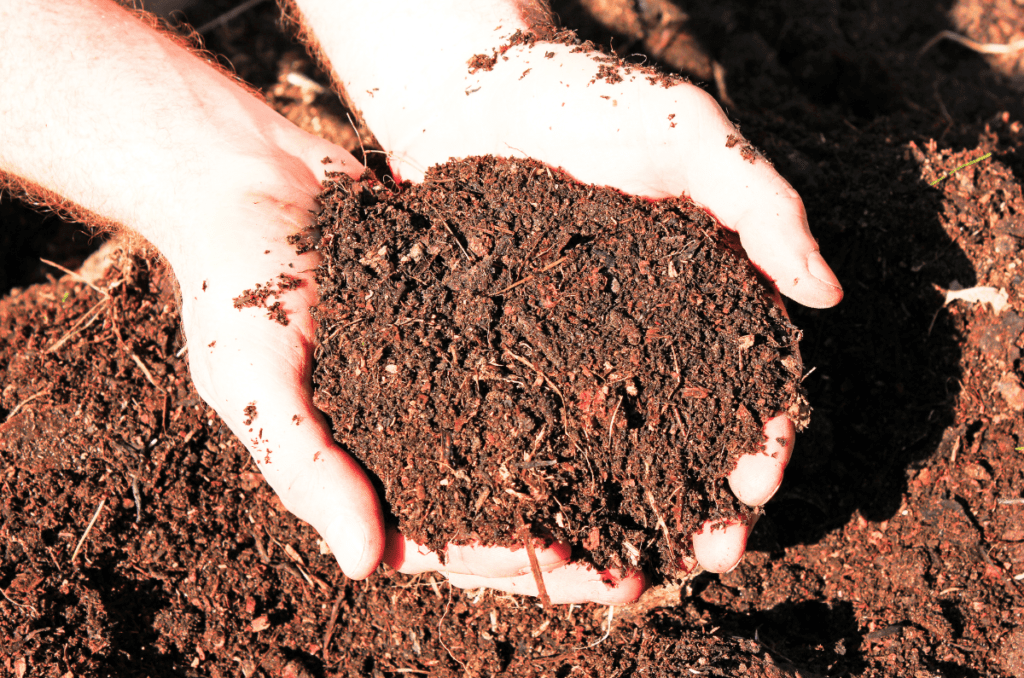
What is Leaf Mold?
Leaf mold is a type of compost that is made 100% from dry leaves. There is nothing else added; no food scraps, grass clippings, fresh plant matter, just dry leaves.
In contrast to traditional compost, leaf mold is mostly broken down by fungi rather than bacteria. These fungi are present on the leaves and in the air, and contribute to the leaves’ decomposition. This is also why it may take longer for leaf mold to fully decompose compared to regular compost.
However, the result of this process is a fine, crumbly, dark, spongy, and earthy material that acts as the perfect natural soil conditioner.
Why is Leaf Mold Compost Beneficial?
Leaf mold offers a wide range of benefits for your vegetable garden:
- Improved Soil Structure: Leaf mold enhances soil texture, making heavy clay soils looser while helping sandy soils retain moisture. It helps both sides of the soil spectrum, helping you to achieve a perfect balance.
- Increased Water Retention: Soils amended with leaf mold have been shown to hold over 50% more water than soils without leaf mold. This is especially important for warmer climates.
- Nutrient Boost: Although fairly low in nutrients itself, leaf mold provides many trace minerals. It also provides lots of organic matter to feed your soil microorganisms, improving your garden’s health.
- Eco-Friendly Solution: Leaves are a common waste product in many gardens. They fall every year and mostly get thrown into the landfill. Instead, repurpose these leaves to make fine leaf mold compost.
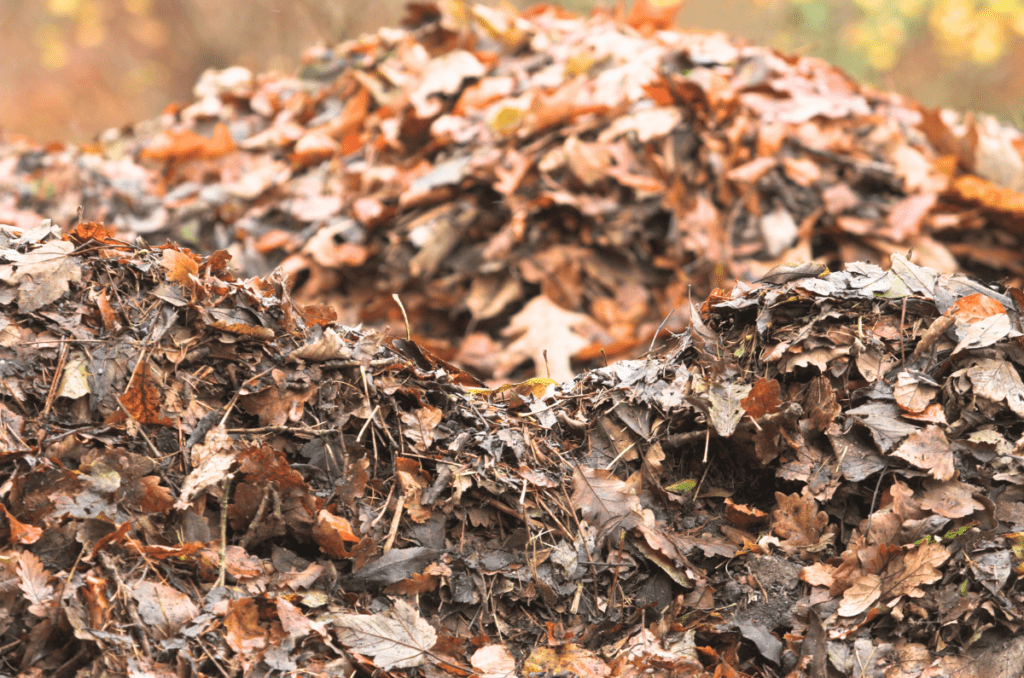
How to Make Fine Leaf Mold Compost
Making leaf mold compost is very simple, requiring only leaves, time, and maybe some patience. Follow these steps to get started:
Collect the leaves
Gather all the fallen leaves from your yard. You can even ask your friends or neighbours for their leaves, if they’re going to throw them out.
Smaller leaves are ideal, as large leaves will take longer to break down completely.
Shred the leaves
This step is what will make your leaf mold very fine and crumbly.
Use a lawn mower like I did in this video to shred the leaves that you gathered. It is actually very simple; instead of raking all of them, just pass over the leaves with the lawn mower. If you have the bag in the mower, it will also collect all the leaves for you.
This will make the pieces very small and increase the surface area for the fungi to start the decomposition process.
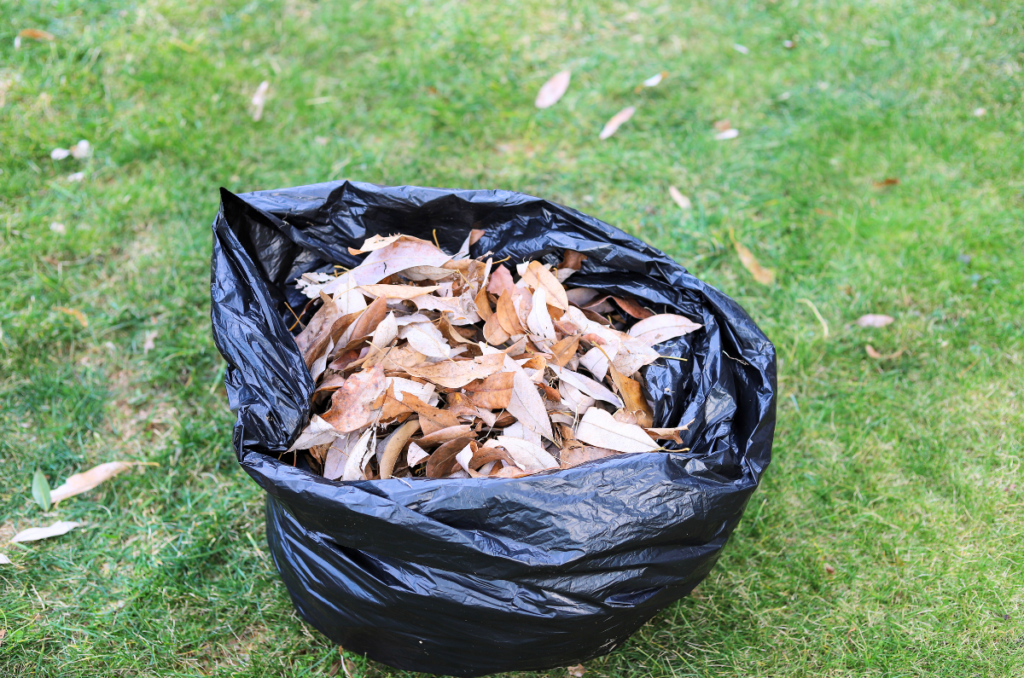
Pile or bag the leaves
The most common method for making leaf mold is to gather all the leaves into a big pile that is contained with chicken wire or wire mesh. Make sure to water them in as well. This is a good method, until it becomes an eye sore to look at.
In contrast, consider bagging all of your leaves into large black garbage bags. Poke some holes into the side and water the leaves. Now you can close up the bags and keep them out of sight.
I cannot stress enough that there needs to be a lot of leaves for this process to work properly.
A 5 gallon bucket is not enough. I would say that in order to generate enough heat, use at least 20 gallons of compacted leaves for one leaf mold pile.
Wait and turn
Like I said before, leaf mold can take a long time to fully decompose, usually between 1 and 2 years.
However, this process is sped up by using shredded leaves.
The pile needs to be consistently warm (140 degrees F) in order to facilitate proper decomposition. If you live in a climate with cold winters, this may be harder to achieve. If you live in a warmer climate, then you’re all set!
To heat up your leaf mold pile, make sure to turn it every few weeks. This will distribute the fungi around the leaves to properly break them down.
Harvesting the leaf mold
Once the leaf mold is fully broken down into a spongy, crumbly dark material, it is ready to be harvested and used in your garden.
It is going to look very similar to soil, but it is actually very different. Remember that leaf mold is 100% organic matter, so don’t substitute it for garden soil.
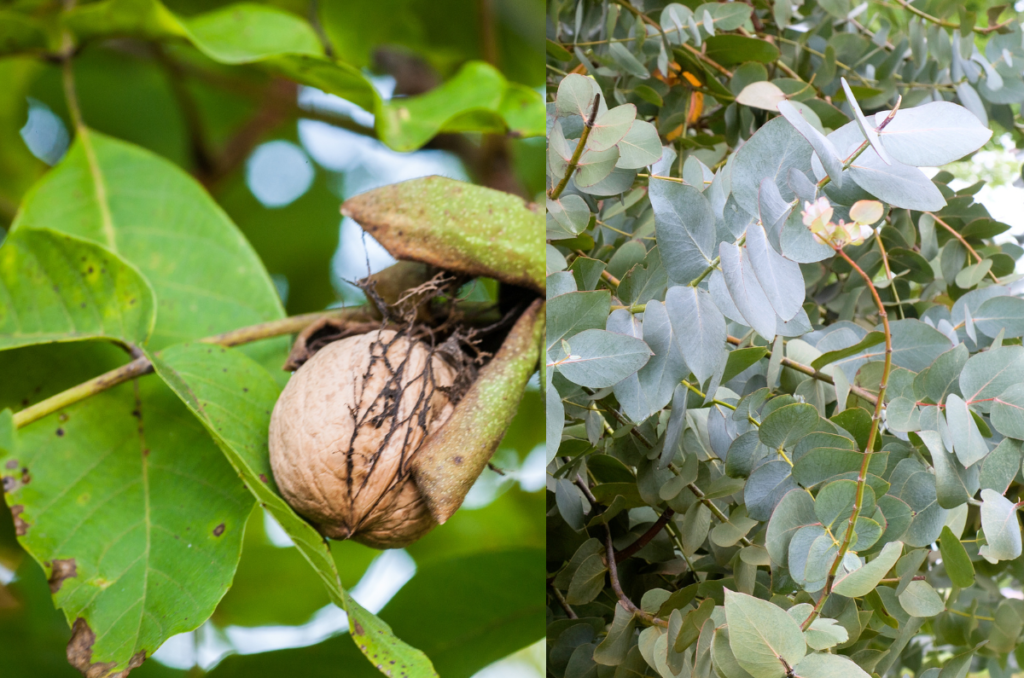
Don’t Use the Wrong Leaves!
This may seem like a silly statement to make, but don’t use the wrong leaves for your leaf mold compost!
Avoid using leaves contaminated with toxic chemical pesticides or herbicides like the plague. These toxic chemicals may still be present after the decomposition process is over, and then you’re going to put them in your garden.
Not ideal.
Instead, know the source of your leaves and never use synthetic chemicals in your garden.
Additionally, there are some tree species that are actually toxic to other plants.
Two of the most popular of these are black walnut and eucalyptus. These trees emit allelopathic chemicals that inhibit the growth of other plants around them.
This means that the allelopathic chemicals might still be present after the leaves have been broken down.
Therefore, the leaves of allelopathic trees and leaves contaminated with toxic synthetic chemicals should never be composted.
How I Use Leaf Mold in My Vegetable Garden
Here are some different ways you can use this fine leaf mold compost in your vegetable garden:
- Mulching: Leaf mold can be used as a mulch to protect the surface of your soil. It makes a perfect mulch because it is full of organic matter, which is beneficial for soil microorganisms. Additionally, because leaf mold is very dark in colour, it is perfect as a winter mulch because it absorbs more sunlight, which warms up your soil.
- Soil Amendment: You can also mix leaf mold directly into your soil to add organic matter and beneficial organisms. It would be kind of like a mix between coco coir and compost, in the sense that it helps to retain moisture and provides organic matter.
- Compost Additive: Because of the beneficial organisms found in leaf mold, it also makes a great addition to the compost pile. It will give your compost the kick it needs to get started.
- Seed Starting: Typically with seed starting, we would use coco coir as a growing medium to hold on to lots of moisture. However, you can substitute this out with leaf mold to give your young seedlings a little boost of nutrients.
Discussion Questions:
- Have you ever made leaf mold compost before? How do you do it and how long does it take to fully break down?
Please let us know in the comments below!
Frequently Asked Question
Properly managed leaf mold should not attract any pests. That is the beauty of it! If for some reason you have incorporated other materials (such as food scraps, grass clippings, etc.), then it may attract pests. But with just 100% leaves, there shouldn’t be a pest problem.
Even if we grant that leaf mold is slightly acidic, it will make no difference if you incorporate it into your garden. It will not significantly change the pH of your soil, and it will not harm your plants. This is just a myth.
Yes, you can compost leaves with visible disease, as long as your leaf mold pile reaches its proper temperature of 140 degrees F. When it reaches this hot temperature, the diseases will be killed and decomposition will continue.
Once you incorporate the leaf mold into your soil, you can plant right into it. Avoid putting plants in just leaf mold, as it needs to break down further in the soil for the nutrients to become bioavailable for the plants.
Even More Gardening Ideas
Here are a few more posts to get the ball rolling in your garden!
- How to Protect Plants from Frost
- 100% Success Method for Propagating Grape Vines from Cuttings
- What is Cold Stratification? Here’s What to Know
If you enjoyed this article, make sure to share it with your friends and family members who are also looking to improve their gardening skills. Also, consider signing up for our email newsletter; don’t worry, we won’t spam you, just fresh gardening tips and tricks every week!
If you want to learn more about gardening, foraging, and nature, check out The Real Gardener on LinkedIn, YouTube, and Pinterest.
Pin this post for later:

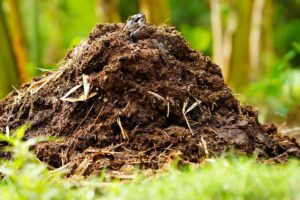
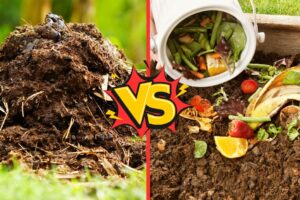
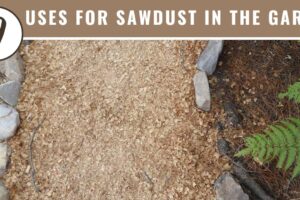
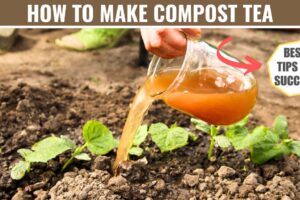
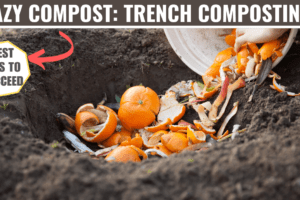
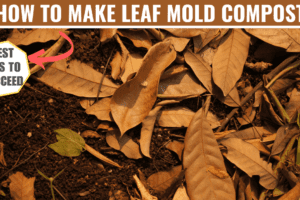
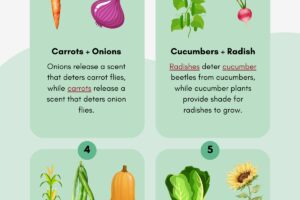
Leaf mold is nature’s underrated secret for rich soil, thanks for sharing. How long does the average batch take to reach that crumbly gold stage?
It usually takes 1-2 years. Some people like to add a bunch of stuff to it (like green material) to speed up the process, but that just makes it regular compost.